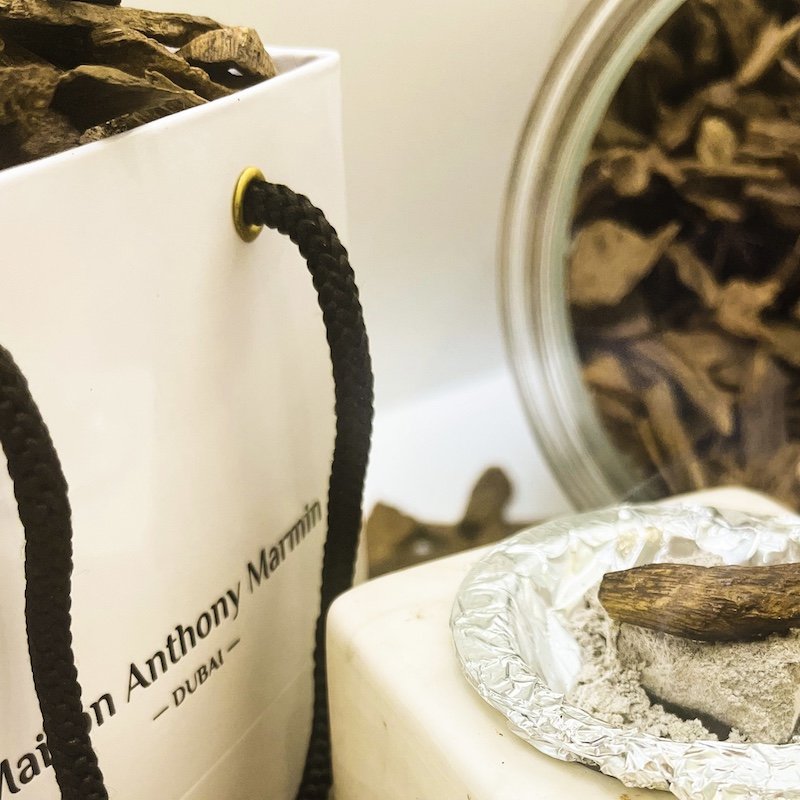What is Oud and Agarwood?
It is one of the most expensive perfume ingredients in the world and it has gained a great popularity in modern perfumery. Oud is known to be rare and precious and here we are going to understand the different names given to this oil extracted from the infected resinous heartwood of a particular tree genus.
Oud can also be spelled Aoud or Oudh since it comes from an arabic word “عود” which means wood. So what is Oud?
What is Oud
Oud, also known as agarwood, agar, but also commonly called aloeswood or Gaharu, is a dark resin that forms in some trees when they become infected by a parasite or a fungus. As the infection progresses, the tree produces a dark aromatic resin in response to the attack.
These trees are belonging to a genus of 15 species named Aquilaria. We find them is Southeast Asia, in countries such as India, Thailand, Indonesia, Vietnam, Laos, Bangladesh, Malaysia and Cambodia…Remember that there is no oud from Mekkah nor Grasse. When you want to buy some, the geographic area is the one we said previously.
Wild oud becomes very rare and most of the agarwood on the market come from sustainable plantations where defense mechanism of the tree to produce this resin is caused by a human process, injections, bark scraping, or a nail hammered to give a few examples.
Due to its scarcity and labor-intensive extraction process, oud has become one of the most expensive and sought-after ingredients in the world of perfumery.
Oud has a rich cultural heritage, deeply rooted in Middle Eastern traditions. It has been used for traditional attars and perfumes. The scent of oud is often associated with luxury making it a prized ingredient in the Middle East and beyond.
What is Agarwood?
Agarwood chips are used for incense and the price vary with the origin and the quantity of resin on it. By a distillation process is produced oud oil to make perfume.
What is Dehn Al Oud?
Dehn Al Oud also spelled Dehn Al Oudh is an arabic word “دهن العود” and literally means “The fat of the Wood”. It is the exact name to designate oud oils.
Nowadays people use the word oud to designate agarwood chips and Dehn al oud as well.
What is the Extraction process of Oud?
The extraction of oud is a time-consuming process. The infected heartwood is carefully harvested and left to dry for several months or even years, allowing the resin to mature and develop its distinct aroma. Once the resin is ready, it is either steam-distilled or subjected to hydro-distillation to extract the precious oud oil. The resulting oil is highly concentrated and possesses a complex, woody, and smoky fragrance that is both captivating and long-lasting.
The Olfactory Experience of Oud
Oud possesses a unique olfactory profile that sets it apart from other fragrance notes. Its aroma is often described as deep, smoky, and resinous, with hints of sweetness and earthiness. The scent evolves over time, revealing different facets and complexities, making it a true sensory journey. Oud can be both intense and subtle, depending on the concentration and the other ingredients it is blended with. Its ability to add depth, warmth, and a touch of exoticism to perfumes makes it a favorite among perfumers and fragrance enthusiasts alike.
Versatility of Oud in Perfumery
Oud can be blended with other ingredients to create unique fragrance compositions. Its versatility allows it to be paired with various accords, such as floral, citrus, or spicy notes, resulting in a wide range of olfactory experiences. Oud can be found in both masculine and feminine fragrances, transcending gender boundaries and appealing to a diverse audience. Its ability to evoke a sense of luxury and sophistication has made it a staple in high-end niche perfumery.



